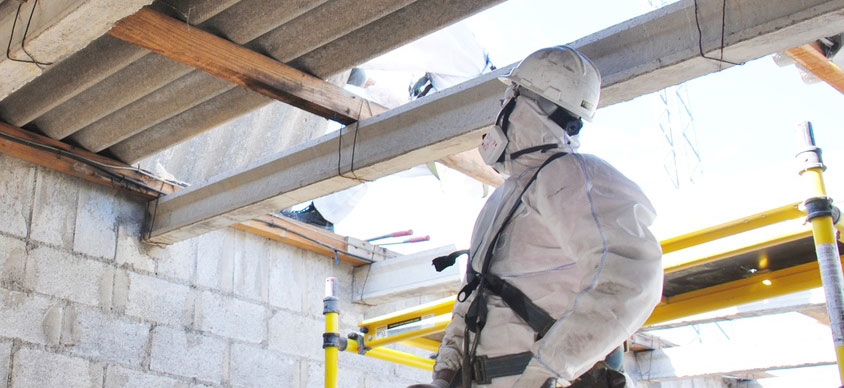hidden
We have over 20 years' of experience.

We have over 20 years' of experience.


By James
Category: Industry
Asbestos: the word alone might conjure images of hazard signs and safety warnings. This naturally occurring mineral, once lauded for its fire resistance, strength, and insulating properties, became a staple in the construction industry throughout the 20th century. However, its reputation took a drastic turn as the health risks associated with asbestos exposure came to light, leading to stringent regulations on its use and management. The question now for many property owners is: Could there be asbestos present within your property?
Despite being banned in many countries, asbestos is still prevalent in millions of buildings worldwide, especially in those constructed before the late 20th century. In the UK, for example, any building erected before the year 2000 may contain asbestos. It was used in various applications, from roofing materials and floor tiles to insulation and textured coatings. The widespread use of asbestos means that it could be lurking in numerous places within older properties, often hidden or mistaken for other materials.
Identifying asbestos within a property is not always straightforward. Asbestos-containing materials (ACMs) can look similar to non-asbestos products, making visual identification challenging without professional help. Common areas where asbestos might be found include but are not limited to:
If your property dates back to a time when asbestos use was rampant, and you’re planning renovations or demolition, it’s crucial to consider the potential presence of asbestos.
The health risks associated with asbestos exposure are significant. When asbestos-containing materials are disturbed, they can release fine dust containing asbestos fibres. Once inhaled, these fibres can cause serious diseases, including mesothelioma (a type of cancer), asbestosis, and lung cancer. The latency period between exposure and the onset of disease can be several decades, meaning that individuals might not immediately realise the impact of exposure.
If you suspect that your property might contain asbestos, taking immediate action is crucial for the safety of all occupants. Here’s a step-by-step approach:
1. Do Not Disturb: If you come across materials, you suspect contain asbestos, do not disturb them. Asbestos is most dangerous when it's disturbed, which can release harmful fibres into the air.
2. Seek Professional Help: Contact a professional asbestos surveying and removal company. They can conduct a thorough survey to identify the presence of asbestos, assess its condition, and determine the risk it poses.
3. Asbestos Survey: There are two main types of asbestos surveys: management surveys and refurbishment/demolition surveys. A management survey is conducted to locate, as far as reasonably practicable, the presence and extent of any suspected ACMs in the building which could be damaged or disturbed during normal occupancy. A refurbishment/demolition survey is needed before any refurbishment or demolition work is carried out. This type of survey is used to locate and describe, as far as reasonably practicable, all ACMs in the area where the refurbishment work will take place or in the whole building if demolition is planned.
4. Management Plan: If asbestos is found, the professional team can devise a management plan. This might involve sealing or enclosing the asbestos, monitoring its condition, or removing it entirely.
5. Removal and Disposal: Asbestos removal should only be carried out by licensed professionals. They have the equipment and knowledge to safely remove asbestos, minimising the risk of exposure to occupants and themselves.
Awareness and preventive measures are vital in managing the risks associated with asbestos. Property owners, especially those of older buildings, should educate themselves about the potential presence of asbestos and the appropriate steps to take if it is found. Regular checks and maintenance can prevent the disturbance of ACMs and reduce health risks.
The question of whether asbestos is present within your property is not one to take lightly. Given the health risks associated with asbestos exposure, it's imperative for property owners to remain vigilant, especially when dealing with older buildings. Professional asbestos surveys and testing are essential steps in identifying and managing asbestos safely. By taking proactive measures and seeking expert advice, property owners can ensure the safety of their buildings and, most importantly, their occupants.
Feel free to get in touch with us; we're eager to receive your input and offer any guidance you may require. Rest assured, any information you provide will be treated with the utmost confidentiality and will not be shared with any third parties..
Read More